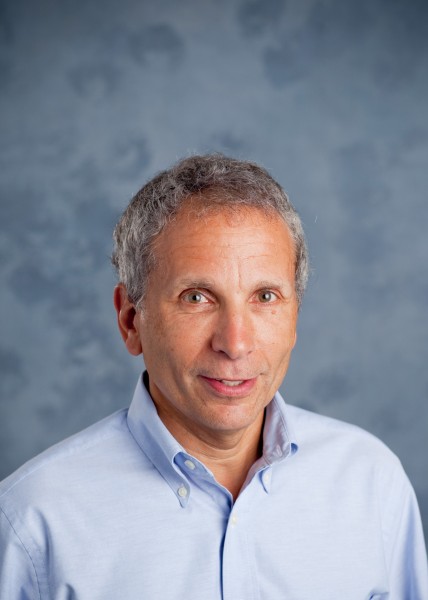
10 Aug To Your Health: 6-Ft. Rule from 1930s; Aerosols not included!
Part-time Telluride local Dr. Alan Safdi, a world-renowned internist and gastroenterologist with encyclopedic knowledge of mind-body wellness and preventative medicine, posts on Telluride Inside… and Out under the banner of “To Your Health.” His blogs feature the most current information in his field: health, wellness, and longevity. Which now has to mean Dr. Alan’s podcasts and stories are all about what’s on everyone’s mind: COVID-19.
Links to Dr. Alan’s podcasts and narratives on COVID-19 are here.
This week, Dr. Alan talks about the 6-foot rule. Turns out that mandate for social distancing dates back to the 1930s and does not take into account aerosols. Below is the current science.
Note: Tough as it is everyone does need to be paying attention to the new normal: the corona pandemic has a death rate about 49 times higher than that of the flu in the United States. Dr. Alan suggests “WMD”: WASH, MASK, DISTANCE.

The novel coronavirus has prompted social distancing measures around the world, but is what we are currently doing enough? We have to truly focus on the science of how this disease spreads since summer weather did not, as hoped, halt the transmission of the COVID-19 coronavirus.
Lydia Bourouiba, an associate professor at MIT, has researched the dynamics of exhalations (coughs and sneezes, for instance) for years at The Fluid Dynamics of Disease Transmission Laboratory and found exhalations cause gaseous clouds that can travel up to 27 feet. All the way back in the 1930’s, William F. Wells focused on tuberculosis transmission and concluded respiratory droplet emissions included “large” and “small” droplets.
The truly scary fact, which warrants repeating, is that given various combinations of an individual patient’s physiology and environmental conditions such as humidity and temperature, the gas cloud and its payload of pathogen-bearing droplets of all sizes can travel 23 to 27 feet. Covid-19 spreads through droplets that an infected person emits through breathing, coughing, and sneezing and smaller, infectious viral particles can drift around in the air for several hours. A person can also get COVID-19 by touching a surface or object that has the virus on it and then touching their own mouth, nose, or possibly their eyes in addition to inhalation. Outdoors, air currents can scatter and dilute the virus, making transmission less likely.
Covid-19 has been able to spread like wildfire around large gatherings such as religious services, choirs, restaurants, and likely via air-conditioning. That cannot be explained solely by larger droplets that fall to the ground quickly. The 6-foot rule came about in the ’30s based on studies of what happened when people coughed or sneezed, releasing large droplets laden with viral particles. Those droplets are heavy and fall to the ground or a nearby surface pretty quickly, actually within seconds. However, we also release aerosols when we cough, yell, talk loudly in a crowded room or bar, sing, run, bike, etc. These are very small particles that can float on air currents and stay afloat for some time, potentially traveling a lot farther than 6 feet.
A new study from the University of Minnesota College of Science and Engineering analyzes how the coronavirus spreads indoors – information that can help businesses and schools take precautions to reduce the chance of COVID-19 transmission as they reopen.
Mechanical engineering associate professor Jiarong Hong and assistant professor Suo Yang modeled the airborne virus transmission through aerosols, which are ejected from our mouths when we exhale or speak. The SARS CoV-2 virus simply hitches a ride on the aerosols as they land on nearby surfaces or are inhaled by another person.
Using precise experimental measurements of aerosols released by eight asymptomatic individuals with COVID-19, the researchers were able to numerically model the external flow of the virus through the air in three interior spaces—an elevator, a classroom, and a supermarket. Then, they compared how the virus faired among different levels of ventilation and with different spacing among the rooms’ occupants.
“In general, this is the first quantitative risk assessment of the spatial variation of risks in indoor environments,” Hong said. “You see a lot of people talking about what the risks are of staying in confined spaces, but nobody gives a quantitative number. I think the major contribution we’ve made is combining very accurate measurements and computational fluid dynamics simulation to provide a very quantitative estimate of the risks.”
The researchers found that in indoor spaces, good ventilation will filter some of the virus out of the air, but may leave more viral particles on surfaces. In the classroom setting, after running a 50-minute simulation with an asymptomatic teacher consistently talking, the researchers found that only 10 percent of the aerosols were filtered out. The majority of the particles were instead deposited on the walls.
“Because this is very strong ventilation, we thought it would ventilate out a lot of aerosols. But, 10 percent is really a small number,” said Yang, who holds the Richard and Barbara Nelson Assistant Professorship in Mechanical Engineering. “The ventilation forms several circulation zones called vortexes, and the aerosols keep rotating in this vortex. When they collide with the wall, they attach to the wall. But, because they are basically trapped in this vortex, and it’s very hard for them to reach the vent and actually go out.”
In each scenario, the researchers mapped the air flow to find locations of virus “hot” spots, or where the aerosols congregated. With the right combination of ventilation and interior organization, it could be possible to mitigate the disease spread and avoid these hot zones, the researchers said.
For example, in a classroom setting, the virus aerosols spread significantly less throughout the room when the teacher—who is likely doing the most talking—was placed directly under an air vent. That insight could inform how classrooms are arranged and disinfected, and also help places like theaters and concert venues reopen with the proper precautions.
Yang and Hong recently began working with the Minnesota Orchestra to measure aerosol concentrations and flow while instruments are played onstage at Orchestra Hall. Eventually, they hope to provide the nonprofit with a plan to minimize the COVID-19 risk in that venue.
As many businesses reopen we will definitely need this type of scientific information, especially for places such as theaters, really any place that accommodates large gatherings.
If we do a good job, if we have good ventilation at the right location, and if we scatter the seating of the audience properly, gathering would likely be much safer.
That said, one other point: the risk of infection in public restroom. There is a tremendous amount of COVID-19 in the stool of infected individuals. Clouds of droplets can rise 3 feet from a flushing toilet and be inhaled by an unsuspecting user. Covid-19 in a person’s stool can land on other surfaces or float in the air nearby. Precautions need to be taken here too.
Dr. Alan, more:

Dr. Alan Safdi is board-certified in Internal Medicine and in Gastroenterology and is a Fellow of the American College of Gastroenterology. A proven leader in the healthcare arena, he has been featured on the national program, “Medical Crossfire” and authored or co-authored numerous medical articles and abstracts. Safdi has been involved in grant-based and clinical research for four decades and is passionate about disease prevention and wellness, not just fixing what has gone wrong. He is an international lecturer on the subjects of wellness, nutrition and gastroenterology.


Lawry de Bivort
Posted at 11:24h, 11 AugustThis is an excellent article, Alan. Well researched, well documented. Thank you.
We could also equally challenge—
– the two-week-quarantine “rule”,
– the longevity and effectiveness of the immunity “rule”,
– the it’s-safe-to-reopen “rule”,
– the warm-weather-will knock-the-virus-out “rule”,
– the children-suffer-fewer-symptoms-and-don’t-contribute-much-to-the-spread “rule”,
– the we-are-safe-as-long-as-we-have-unused-treatment-capacity “rule”,
– and the if-the-numbers-turn-bad-we’ll-simply-close-things-back-down “rule.”
All these rules are repeated blindly by ordinary citizens, public health personnel, and political leaders—comforting mantras but ones that contain a toxic core: none of them are based in fact or reality.
Lawry
Pingback:6 steps to slowing aerosol Covid | Telluride Inside... and Out
Posted at 17:32h, 06 September[…] to slowing airborne aerosol coronavirus transmission. A must-read. Along with listening to this “To Your Health” post by Dr. Alan Safdi on the same […]